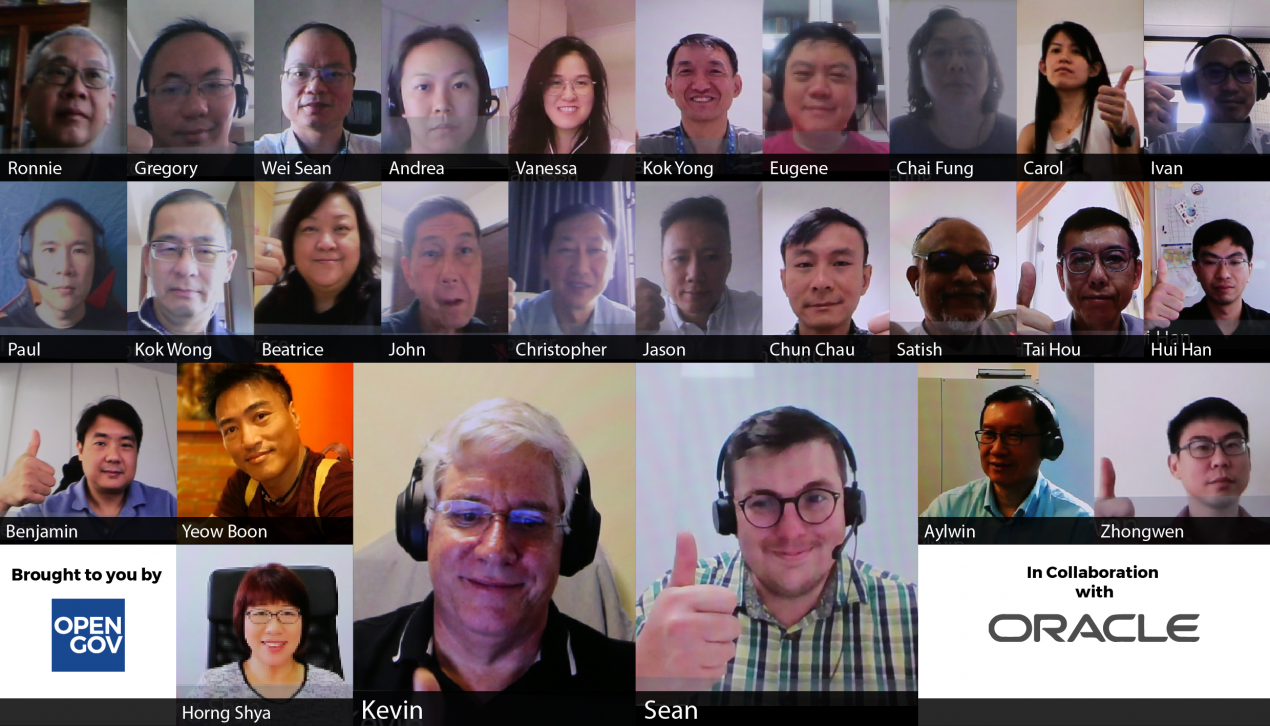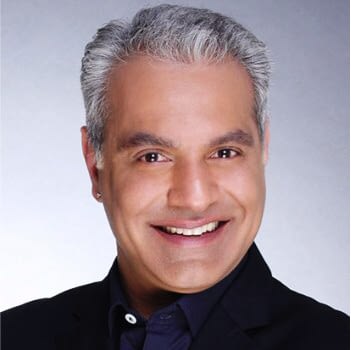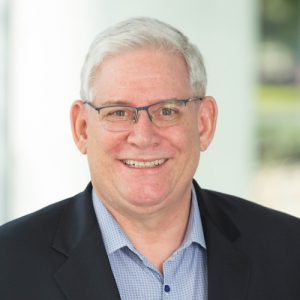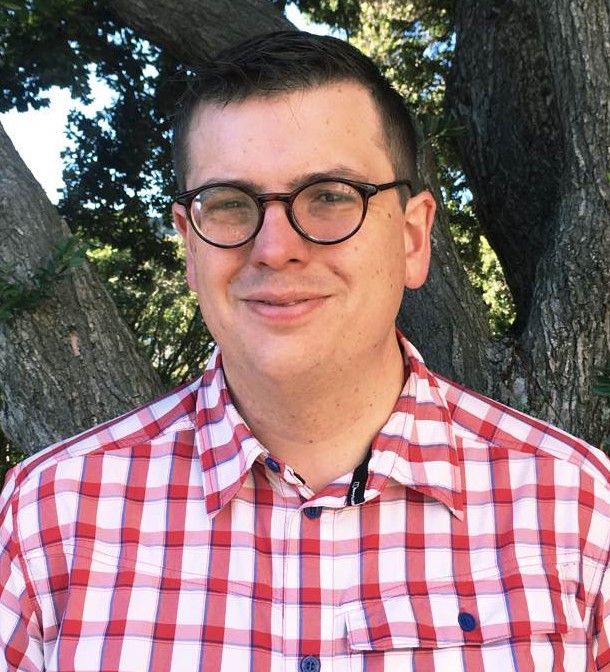
The COVID-19 pandemic has accelerated the need for more advanced technology and regulatory bodies have become hyper-focused on monitoring the health and safety of citizens. In this backdrop, smart city developments across the globe are expected to increase in the next several years.
The future of urban living is promising and a digital twin gives smart city planners a tool to help make this safe, clean, sustainable vision into a reality. The digital twin virtually represents a physical object as the real-time digital counterpart. This replica provides a detailed digital depiction of urban networks and systems within a city, such as power grids, roads, traffic and safety monitoring which makes use of real data obtained from the monitoring devices within the city.
Initially developed to aggregate, analyse and visualise complex information for manufacturing and construction industries, digital twins are increasingly being used as a tool to plan and manage cities due to their efficacy and efficiency.
The digital twin concept is poised to play an increasingly important role in the creation of smart cities around the world and in addressing issues related to urban living. Bringing the virtual and physical worlds together allows public sector agencies, businesses and researchers to experiment and simulate different scenarios, and build a more resilient city.
Singapore has been proactive in its plans to become a digitally-enabled country, with the government announcing the Smart Nation initiative in 2014 and investing S$ 73 million in the Virtual Singapore Project – a digital three-dimensional city model and collaborative data platform.
Smart cities are driven by data at their core. Data integration and visualisation from across the urban space are paramount to connect businesses, citizens, and public services with autonomous infrastructure. In essence, the digital twin has to be the hub for all the real-time data being captured within a smart city.
The digital twin has gained momentum as Artificial Intelligence and Machine Learning revolutionise inference, prediction and decision-making tasks as the technology can process massive amounts of data in a way that humans cannot.
AI and ML can use the data flowing from the physical asset to the digital twin to provide insights to have better decision-making that will result in real actions and interventions. With ML, virtual models can be created based on observed behaviour and historical data rather than the design information alone.
Essentially, the purpose is to build a robust and secure cloud platform is to deliver exceptional citizen-centric services. This purpose can be achieved by leveraging AI, IoT, ML and Analytic into the process.
Given the obvious advantages and the centrality of the concept, the question is how the public sector can successfully implement a digital twin to improve the efficiency of its smart city strategy and mitigate IT constraints.
This was the focal point of the OpenGovLive! Virtual Breakfast Insight held on 11 May 2021. The session aimed to impart knowledge on smart city adoption at scale with a digital twin in the public sector. It also looked to explore best practices to improve data analytics in the automation process, scalability and service delivery levels and security.
This session served as a great peer-to-peer learning platform to gain insights and practical solutions to implement digital twin to enable more efficient, robust, and smarter infrastructure and smart city systems
Making Data-Driven Decisions

To kickstart the session, Mohit Sagar, Group Managing Director and Editor-in-Chief at OpenGov Asia delivered his opening address.
As the COVID-19 pandemic ravaged the world, each country had to reimagine and reorganise itself from numerous perspectives. In fact, many countries do not have the pandemic under control as the virus continues to spread.
Governments tend to be reacting to problems instead of making data-driven decisions. While governments need to look at data to get valuable insights for decision-making, are decisions truly driven by data or are they still mostly influenced by gut-feeling?
In a technologically advanced nation like Singapore, Mohit feels, this begs the question: is the government is doing enough to utilise digital twins as the country is one of the benchmarks for smart nations in the world?
Digital twins are an integral part of creating a smart city as they provide accurate and actionable insights. They can provide real-time information interchange and diagnostic, monitor conditions and predict operations.
Mohit focused on four things – data, cloud, artificial intelligence and machine learning. Even though the output provided by these technologies could potentially be biased, people can look at the biases and decide what insights are better.
In closing, Mohit emphasised the importance of collaboration. Agencies must find the right partners to be clients, project managers, facility managers, surveyors, architects, suppliers, main and sub-contractors. Transitioning to the digital world requires a collective effort and best led by experts.
Connecting Physical and Digital worlds with Smart Cities and Digital Government Services

After the opening address, the session moved to a presentation by Kevin Walsh, Executive Technology Advisor, Senior Vice President Oracle Labs. He discussed various ways to connect physical and digital worlds with smart cities and digital government services.
The pandemic forces digital transformation and Kevin believes that these changes will have long term effects. The new normal is going to be something completely different from the pre-COVID-19 era.
Governments have three imperatives to respond to these accelerating changes. First, to get more things done with fewer resources, be more efficient and provide citizen-centric services. Second, governments need to have a rapid change of approach to unlock the value of data. The final imperative is to use data to provide better outcomes.
Kevin sets the future on three mantras:
- Build an agile organisation: Drive incremental change by adding new capabilities in all core government operations that leverage the power of data.
- Choose continuous innovation: Take advantage of the latest innovations that will help transform the way everything is done.
- Leverage next technology: Maintain the highest levels of security, reliability and performance.
Smart cities use digital technologies to transform and interconnect urban ecosystems. Wi-fi, IoT, cloud, mobile, biometrics, AI, blockchain and telematics are the foundational technologies of a smart city. Emerging trends in many sectors such as advanced human-computer interfaces, autonomous robots and artificial intelligence, cybersecurity, data innovations, MedTech in public healthcare and smart utilities will also contribute greatly.
Kevin offers four pillars on which to base the digital twin concept – connect, analyse, predict and act. Governments need to connect machines, people, systems and data together. In terms of analysing data, governments need to go beyond only making reports, process complex data to make predictions and then later derive actions or recommendations.
Digital twins simplify interactions with physical assets and create data through the entire lifecycle. Oracle also uses digital twins to optimise complex systems everywhere, such as security and defence, oil and gas and agriculture.
Kevin closed his presentation by reminding everyone the current time is right to use all these amazing technologies. Digital twins can be used for various cases and opportunities. He believes that the key is to unlock the value of data. Oracle is looking for opportunities to collaborate with people to push the limit for going forward.
Smart Capital

Sean Audain, City Innovation Lead, Wellington City Council, was the next speaker and discussed ways digital twins have been used in practice to build smart cities.
Sean explained how Wellington City tried to get rid of COVID-19 by linking government digital footprint to speed up processes, change relationships with citizen and focus all their capabilities on a single goal. Wellington City built a very quick reporting system where all necessary information is available.
Information was being shared across different ministries, looking hour-by-hour at cases at a given place and pulling the data into Wellington City to understand what that meant in this environment.
This large model of the city was being fed by data from the ministries, using them as a way to accelerate decision-making and easy access to decision-makers. The visual representation is useful as not everybody can read a map but almost all can recognise a building and work through a three dimensional (3D) environment. It allows different ministries and different branches of the council to plan and talk to each other.
Sean said after dealing with the biological threat, they had to deal with the economic fall-out; generating creative solutions to restore the economy. The pandemic did not cause a significant impact domestically but, in many ways, accelerated trends that already existed in the economy of Wellington City.
Wellington City uses pictures of all of the facades of the building, put them to machine learning, and classify them into different types of industries. They used the model to understand everything from street light to pipes, from regulatory data to the planning framework. The model allowed them to perceive what the crisis looked like individually, street by street, and tried to answer what shape an economic shift would take.
Using data and technology, Wellington City attempted to understand which streets are vulnerable to macro trends and those that are not. This insight was invaluable in informing the city on how to properly intervene.
As an example, Sean showed a proposal for Mass Rapid Transit. By using digital twins, they can stand on any street and any building in the city. Being able to witness how the physical objects will all fit together is incredibly powerful and it makes decision-making much more effective.
Sean said that one of the post-pandemic issues is their data cannot provide insights about the future as accurately as before the pandemic. The future is a pattern and it is not going to be the same after COVID-19. Sean urged everyone to think differently before the new pattern establishes itself.
Wellington City’s strategy is to understand how to move from a transaction-based city to an experience-based one, from fixed to flexible, from straight to circular, physical to digital and city to the capital.
In closing, Sean emphasised the importance of trust in digital transformation. People did not trust the digital before the pandemic, but during the pandemic, they had no option. After the pandemic, he is confident that people will continue to trust the digital and will not be back the way it was before.
Interactive Discussion
After the informative presentations, delegates participated in interactive discussions facilitated by polling questions. This activity is designed to provide live-audience interaction, promote engagement, hear real-life experiences and impart professional learning and development for participants.
The first question in the opening poll was about whether Singapore has done enough to be ranked #1 in several Smart City rankings. Over two-thirds (68%) of the delegates said that Singapore needs to build more trust with their citizenry. Almost a quarter (23%) said that Singapore has accumulated enough data to analyse more and predict better and they agreed to let AI and ML shine. Only 9% of the delegates said that Singapore has already engaged their citizens well as they rolled out digitalisation programmes.
One delegate felt that not everyone knows about smart city and digital twins. Therefore it is important to educate everyone on data and cybersecurity in creating smart cities. Another delegate felt that as fake news and uncertainty are rampant, Singapore needs to create more programmes to raise public awareness about smart city. On the other hand, another argued that most of the work to accumulate data has been done, but the data have not been fully analysed well.
The next question focused on how to encourage more user-driven innovations as one of the pivotal ways to promote the success of Singapore’s Smart Nation initiative. Over half (57%) said that Singapore needs a one-stop centralised and consolidated data management repository and policies to ensure standardised, secure data sharing and management. About a quarter (24%) said that Singapore needs to give more help to build the next start-up unicorn from different sectors. Under a fifth (19%) chose other options such as empowering individuals, data provenance and promoting data literacy.
The next poll inquired about which one of the three pillars (Digital Government, Digital Economy or Digital Society) that Singapore needs to prioritise in the next six months. About 43% chose digital government, 33% chose digital economy and 24% chose digital government.
One delegate chose digital society because, he argues, if society is not ready to embrace digital transformation, the government or economy cannot force them to go digital. Another delegate added that what drives the economy is consumers’ demands, that is why digital society is the foundation. Another delegate thought that Singapore needs to prioritise the digital economy in the short term but in the long run, they need to prioritise the digital society. Another delegate chose digital government because it is difficult to adopt advanced tech without up-to-date policies and regulations.

To round off the discussion, delegates were polled on the biggest obstacle in going to the cloud. About half (47%) went with security mainly because governments have more confidential data and are also concerned about who is in charge of the data. Just under a quarter (24%) opted for unfamiliarity due to various aspects of going on the cloud that is not very easy to grasp. Less than a fifth (17%) indicated other options such as data sovereignty, people’s mindset and accessibility. Interestingly, 6% said that they are already on the cloud and it has brought more risks than rewards.
Conclusion
Chua Horng Shya, Managing Director, Oracle Singapore closed the session with concluding remarks. Oracle believes that smart city is driven by data at their core and powered by cloud capabilities.
She talked about harnessing the power of data and accelerating the path to smart digital transformation. There is a great utility, she opined, in leveraging AI and ML for effective decision-making.
Chua Horng Shya allayed the concerns of delegates around security and digital sovereignty on cloud technology. Oracle, in Singapore, is building a data centre or cloud infrastructure with security as their main priority.
Before parting, she thanked everyone for their participation and valuable contributions. Chua Horng Shya encouraged the delegates to reach out to her and the team to explore ways they can work collaboratively on their digital journey.
















